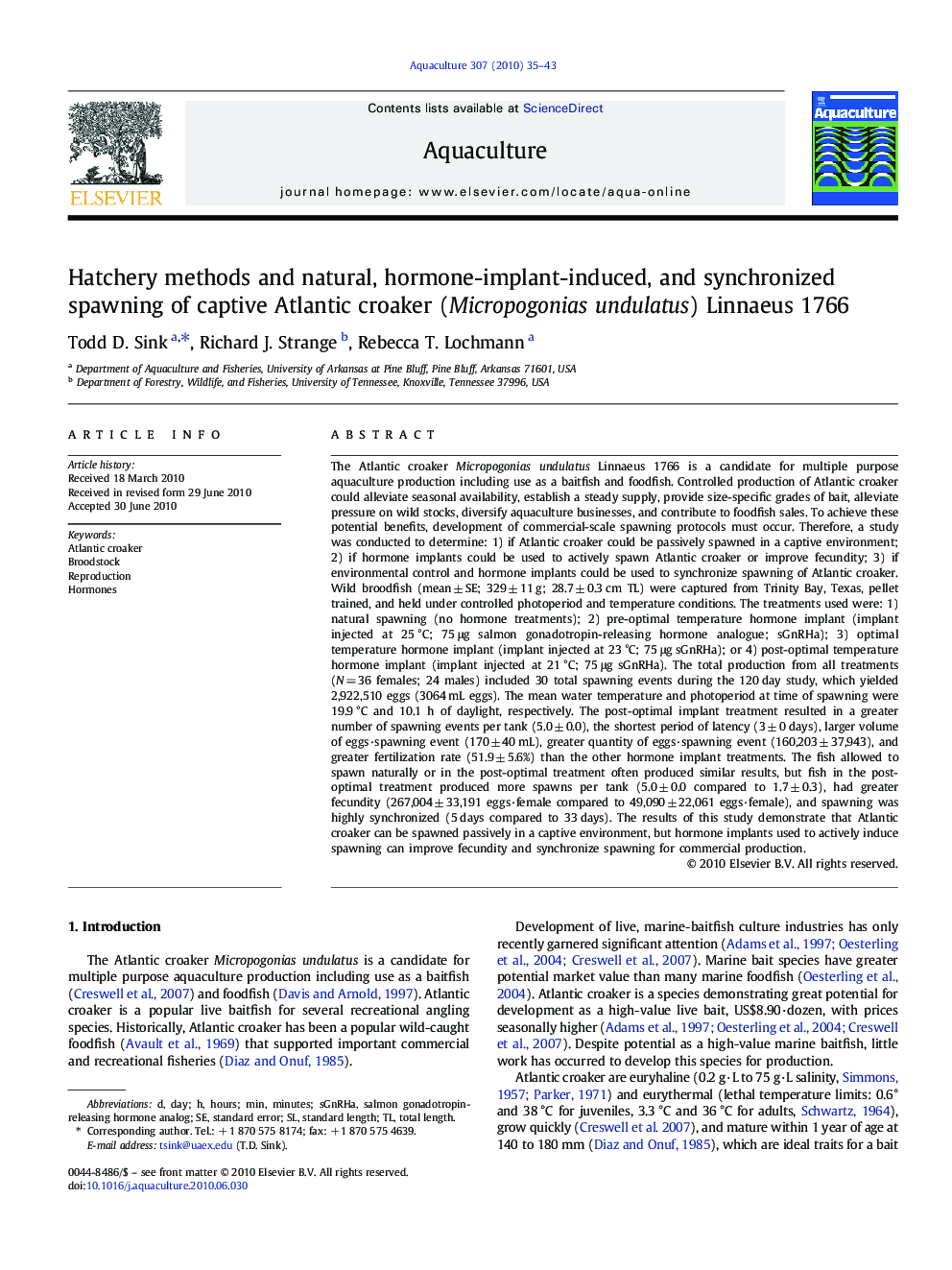| کد مقاله | کد نشریه | سال انتشار | مقاله انگلیسی | نسخه تمام متن |
|---|---|---|---|---|
| 2423553 | 1552921 | 2010 | 9 صفحه PDF | دانلود رایگان |

The Atlantic croaker Micropogonias undulatus Linnaeus 1766 is a candidate for multiple purpose aquaculture production including use as a baitfish and foodfish. Controlled production of Atlantic croaker could alleviate seasonal availability, establish a steady supply, provide size-specific grades of bait, alleviate pressure on wild stocks, diversify aquaculture businesses, and contribute to foodfish sales. To achieve these potential benefits, development of commercial-scale spawning protocols must occur. Therefore, a study was conducted to determine: 1) if Atlantic croaker could be passively spawned in a captive environment; 2) if hormone implants could be used to actively spawn Atlantic croaker or improve fecundity; 3) if environmental control and hormone implants could be used to synchronize spawning of Atlantic croaker. Wild broodfish (mean ± SE; 329 ± 11 g; 28.7 ± 0.3 cm TL) were captured from Trinity Bay, Texas, pellet trained, and held under controlled photoperiod and temperature conditions. The treatments used were: 1) natural spawning (no hormone treatments); 2) pre-optimal temperature hormone implant (implant injected at 25 °C; 75 μg salmon gonadotropin-releasing hormone analogue; sGnRHa); 3) optimal temperature hormone implant (implant injected at 23 °C; 75 μg sGnRHa); or 4) post-optimal temperature hormone implant (implant injected at 21 °C; 75 μg sGnRHa). The total production from all treatments (N = 36 females; 24 males) included 30 total spawning events during the 120 day study, which yielded 2,922,510 eggs (3064 mL eggs). The mean water temperature and photoperiod at time of spawning were 19.9 °C and 10.1 h of daylight, respectively. The post-optimal implant treatment resulted in a greater number of spawning events per tank (5.0 ± 0.0), the shortest period of latency (3 ± 0 days), larger volume of eggs·spawning event (170 ± 40 mL), greater quantity of eggs·spawning event (160,203 ± 37,943), and greater fertilization rate (51.9 ± 5.6%) than the other hormone implant treatments. The fish allowed to spawn naturally or in the post-optimal treatment often produced similar results, but fish in the post-optimal treatment produced more spawns per tank (5.0 ± 0.0 compared to 1.7 ± 0.3), had greater fecundity (267,004 ± 33,191 eggs·female compared to 49,090 ± 22,061 eggs·female), and spawning was highly synchronized (5 days compared to 33 days). The results of this study demonstrate that Atlantic croaker can be spawned passively in a captive environment, but hormone implants used to actively induce spawning can improve fecundity and synchronize spawning for commercial production.
Journal: Aquaculture - Volume 307, Issues 1–2, 1 September 2010, Pages 35–43